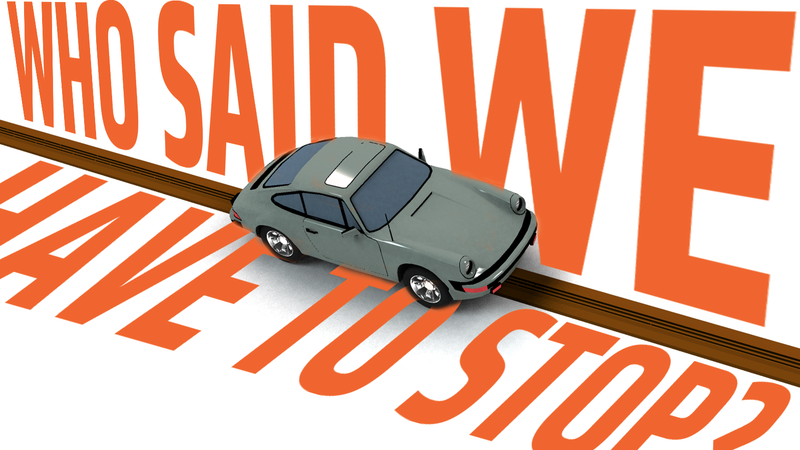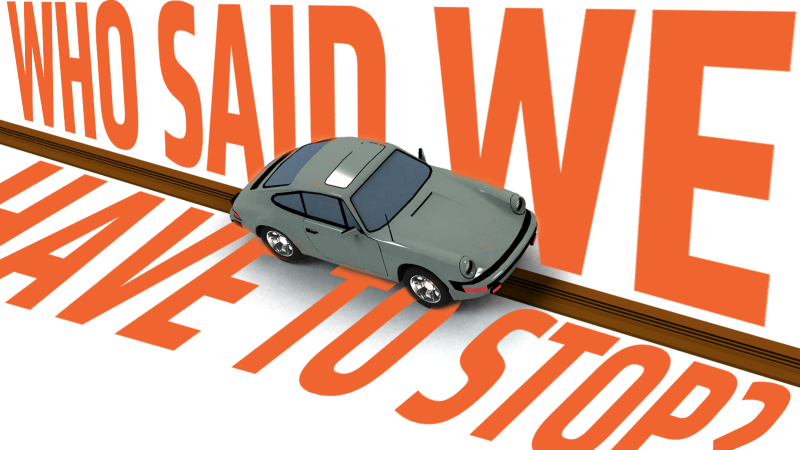
Lately, I’ve been sort of obsessed with the problem of charging electric vehicles. While, ideally I think a battery swapping system makes the most long-term sense, no major automaker seems to be putting any effort into that, so, for now at least, we’re stuck with the charging station concept. And while I’ve had ideas about how EV charging stations could be, I now realize that the very fundamental idea of an EV charging “station” is wrong. I think I have a better idea.
Think about this: what’s the one thing that people complain about charging electric vehicles, and what’s the main thing that carmakers are trying to make their EVs do? Charging time, and charging faster. EVs just take a long time to charge, especially when compared against what everyone is used to, filling a car up with gas.
Even Tesla’s Superchargers need a full half hour to get to an 80% battery charge. That’s pretty good, by charging standards, but it’s still a full half hour, and the end result isn’t even a full battery. That’s why Tesla wants to build restaurants at their Supercharger stations, because the wait won’t seem so bad when you’re jamming your face full of french fries.
While there’s plenty of R&D going on to figure out how to cram electrons into batteries as fast as possible, there’s a huge amount of technical challenges involved, in cooling systems for both the vehicle and charger.
Advertisement
Even for the most advanced of these systems, a three-minute ultra-high-power charge is only giving 62 miles, the equivalent of around two or three gallons of gas in most modern cars. It’s just not there yet.
So, instead of beating our collective heads against the wall trying to fight physics and reduce charging times, what if we approach the problem from a different angle?
Advertisement
Why is waiting 30 minutes or more to charge our cars bad? Because we have other shit to do, dammit. We’re busy. We’re on the go, and, frankly, waiting sucks. So what if we eliminate the waiting aspect entirely? What if we simply find a way to charge EVs without stopping?
This isn’t a liquid fuel like gas, after all. We don’t need big tanks to suckle from. Electricity is already being transmitted all around us, in what may be the most robust and widespread global network of any sort at all. What if we could easily tap into electrical power while our cars were still driving, so charging your EV would not mean stopping and waiting, but rather, say, changing into a special lane while you proceed on your journey?
To do this, we need a way to get electricity into a moving vehicle. While a solution like wireless charging sounds ideal for this, I personally want to try and come up with a simpler, cruder, and cheaper solution.
Advertisement
Inductive, wireless EV charging has been around a while, but so far it’s inefficient and the hardware is fairly expensive. The system I’m considering should be much more robust and cheap, which is why I’m looking to toys for inspiration. Specifically, slot cars.
Slot cars get their power from, you guessed it, little slots in the track with conductors, and a little arm that makes contact. The same essential system could work for full-sized cars, too.

Advertisement
My last EV charging idea proposed a charger with a pop-up charging arm that would make contact on a car-mounted charging port. What I’m thinking now would take this idea and reverse it: the car would have a drop-down charging arm, with little rollers, and that arm would make contact into channels on a charging strip with embedded conductors to transmit the charge. Something like this:

The charging strip would be made of some sort of rugged, weatherproof, heavy-use rubber-type material, the sort of thing already used on highways and road equipment. I’m not thinking that anything would need to be dug into the ground; that’s too costly for my plans.
Advertisement
I’m thinking instead the charging strip would be produced in large spools, then laid down on the road and bonded with some sort of road-equipment adhesive, of which there are many options.
The charging strips could be laid by trucks with spools, sort of like this:

Advertisement
The byword here is cheap. This isn’t hyper-advanced tech, it’s just conductors in a rugged, weatherproof housing. These conductors would be connected to the power grid at set intervals, to be fed the required power.
Where this power comes from really doesn’t matter; for runs of charging strips on highways that cross Southwestern desert-state areas, you could connect them directly to vast solar farms, if so desired. Or, directly to a dedicated wind farm, or the normal municipal power grid. Or any combination. Whatever works!

Advertisement
Unlike normal charging stations, there’s no huge real estate costs and issues. Sure, money would likely have to be paid to the state or whomever owned the roads, but the charging strip wouldn’t change the way the roads can be used. Regular cars could just drive over them with no harm or issue, and they’d be removable if needed.
On the car’s side, I’m thinking there would be a drop-down unit with multiple conductor arms, terminating in little wheels. These wheels would slot into their appropriate conductor slots, and conduct electricity into the car’s charging system.

Advertisement
The wheels themselves are, essentially, miniaturized railroad tech: dirt simple. The number of individual arms/conductors would depend on whatever the standard works out to be, but I’d guess it’d likely be between three and six conductors. If the car hits a bump, or if there’s debris on the charging strip, the conductors just bounce over it and return back into position; the system would be forgiving of quick breaks of contact.
The scale of the charging strip and the charging arm should be enough that normal, straight-line human driving will be adequate to keep electrical contact. There should be plenty of slop in the system to allow for a bit of swerving and easy reconnection.
I’m imagining the whole process working like this: you’d be driving your EV on a highway, or even in city streets, and you’d see a sign that lets you know an EV Charging Lane is coming up. You change into the indicated lane, and then you pass by a sensor that would read a little transponder in your car—something like one of those FastPass or QuickPass or E-Z Pass toll road units.
Advertisement

The transponder would send a signal to your car to deploy its charging arm, and once contact is made with the charging strip, a timer would be started that would be used for billing you for the electricity.
And speaking of billing, think how many more EV customers each charging strip could serve than a charging station with, say, six or eight static stations? One run of charging strip can serve many, many EVs, all at once, and the strip is never locked out from anyone else to use it, barring a total stop of traffic.
Advertisement
You’d then just keep going! Ideally, the signage should let you know how long the particular charging lane goes on for. On a highway trip, for example, you know that a 30-mile charging strip will get you about 30 minutes of charge, if you keep to around 60 MPH.
In high-traffic environments, you can get much more charging time out of a smaller charging strip area. If you had, say, a five-mile charging strip on a road lane in downtown Manhattan, it’s likely that you could creep along and manage to get a lot of charge time in a short area. Same goes for high-traffic highways like the 405 in Los Angeles; you could probably hit 100% charge in four miles or so when that miserable road is at its worst.
Yes, you’re going to be using charge as it’s being pumped into the car, so in that context, especially for high-speed highway use, it’s less efficient than charging a stopped car, but, remember, you’re still in motion, which I think will be worth it. And, in stop-and-go traffic situations, it’s almost as good as being parked and charging!
Advertisement
Sure, there’s some issues and details to be worked out here—making sure everything is safe from unwanted shorts, weatherproofing, durability, all that, but all of those are very solvable engineering problems.
Stopping to charge is a dead end. Sure, when you’re at home, if you’re lucky enough to have your own charger, then, absolutely, charge that car up. But if you’re on a long road trip, or have a tedious, slow daily commute, why lose more of your precious time waiting for your car to slowly sip electrons through a wire?
Charge as you go. Conceptually, it’s hardly a new idea—streetcars have been doing this sort of thing for decades. But as an alternative to park-and-charge EV stations, I think this is a very viable concept, and, if you can just pretend it’s not me suggesting it, I think worth serious consideration.













